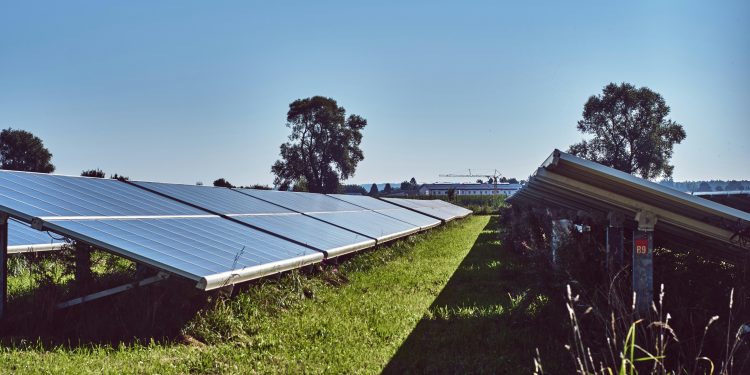In a world increasingly powered by innovation, the sun has emerged as a beacon of hope, casting its golden rays as a potential solution to the energy challenges faced by developing nations. For years, the prospect of harnessing solar energy seemed like a distant dream, overshadowed by the towering costs and complex infrastructures that often accompany technological advancements. However, as the relentless march of progress continues, the question arises: Are solar panels finally shedding their reputation as a luxury of the affluent, and stepping into the realm of affordability for those who need them most? This article delves into the evolving landscape of solar technology, exploring the economic shifts, policy changes, and technological breakthroughs that are illuminating the path towards a more sustainable and accessible energy future for developing nations.
The Economics of Sunlight: Breaking Down Costs and Savings
In the quest to harness the abundant energy of the sun, understanding the economic implications of solar panel adoption is crucial. While initial costs have historically posed a barrier, recent advancements have started to tip the scales in favor of affordability, particularly for developing nations. The significant reduction in manufacturing costs, coupled with innovative financing options, has paved the way for more accessible solar solutions.
- Manufacturing Innovations: Advances in photovoltaic technology have drastically reduced the cost per watt of solar panels, making them more economically viable.
- Financing Schemes: Creative financing models, such as pay-as-you-go and microfinancing, are helping to spread the upfront costs over time, allowing wider access for communities with limited capital.
- Government Incentives: Some developing nations are introducing subsidies and tax incentives to encourage solar adoption, further reducing the financial burden on consumers.
These factors collectively contribute to a more favorable economic landscape for solar energy in regions that can benefit most from sustainable energy solutions. As the economics of sunlight become increasingly favorable, the dream of a solar-powered future is inching closer to reality for many developing nations.

Harnessing Solar Potential: Technological Innovations in Affordable Energy
In recent years, the landscape of solar energy has been transformed by a series of groundbreaking technological advancements. These innovations have played a crucial role in making solar power more accessible and affordable for developing nations. Thin-film solar cells, for instance, are revolutionizing the industry with their flexibility and reduced material costs. Unlike traditional silicon-based panels, these lightweight alternatives can be produced with less energy and are adaptable to a variety of surfaces, making them ideal for diverse geographic regions.
Moreover, the advent of solar microgrids is enabling remote communities to harness solar power without the need for extensive infrastructure. These decentralized systems can efficiently distribute electricity to areas that were previously off-grid, ensuring energy independence and reliability. Key technological advancements contributing to this shift include:
- Advanced energy storage solutions that allow for the capture and use of solar energy even when the sun isn’t shining.
- Smart grid technology that enhances the management and distribution of solar power.
- Innovative financing models that lower the initial investment barriers for solar installations.
As these innovations continue to evolve, they promise not only to lower costs but also to democratize energy access across the globe, fostering sustainable development in areas that need it the most.

Bridging the Gap: Policy Strategies to Support Solar Adoption
In the pursuit of making solar energy accessible and affordable for developing nations, innovative policy strategies are crucial. Governments and international bodies are now recognizing the potential of financial incentives and subsidies as pivotal tools. These incentives could take the form of tax breaks, grants, or low-interest loans aimed at reducing the initial cost barrier for both individuals and small businesses. By implementing these measures, the financial burden can be significantly alleviated, encouraging broader adoption of solar technology.
- Financial Incentives: Tax breaks, grants, and low-interest loans to reduce initial costs.
- Infrastructure Development: Public investment in grid improvements to support solar integration.
- Education and Training: Programs to develop local expertise in solar technology and maintenance.
Furthermore, public investment in infrastructure is necessary to support the seamless integration of solar energy into existing power grids. This includes upgrading grid systems to handle intermittent solar power and ensuring reliable energy distribution. Additionally, investing in education and training programs is vital to cultivate local expertise in solar technology and its maintenance, empowering communities to manage and sustain their energy resources independently.

Empowering Communities: Practical Steps for Implementing Solar Solutions
As solar technology becomes increasingly cost-effective, developing nations stand on the brink of a transformative energy revolution. The path to empowering communities through solar solutions begins with a few practical steps that can be implemented with relative ease. First and foremost, education and training play a crucial role. By equipping local technicians with the skills needed to install and maintain solar systems, communities can ensure the longevity and efficiency of their solar investments.
Moreover, establishing partnerships with local businesses and NGOs can significantly aid in overcoming logistical and financial barriers. These partnerships can provide access to micro-financing options, making it possible for even the smallest communities to afford initial setup costs. Additionally, governments can contribute by offering incentives and subsidies that make solar solutions more attractive compared to traditional energy sources. Ultimately, the journey towards solar empowerment is a collective effort that requires the active participation of all stakeholders, fostering an environment where renewable energy can thrive and illuminate futures.
Final Thoughts
As the sun sets on the horizon of our exploration into the affordability of solar panels for developing nations, the landscape is illuminated with a spectrum of possibilities. The journey towards widespread solar adoption is dotted with both challenges and triumphs, but the momentum is undeniable. With technological advancements driving costs down and innovative financing models emerging, the dream of accessible solar energy edges closer to reality for many.
However, this transition is not without its hurdles. Infrastructure, policy frameworks, and socio-economic factors all play pivotal roles in shaping the path forward. The road is complex, yet the potential rewards—environmental sustainability, energy independence, and economic growth—are too significant to ignore.
As we close this chapter, the question lingers: Are solar panels finally affordable for developing nations? The answer, nuanced and evolving, rests on the shoulders of global collaboration, local initiative, and the relentless pursuit of a brighter, more equitable future. The dawn of a solar revolution may well be on the horizon, waiting to illuminate the lives of millions.

































